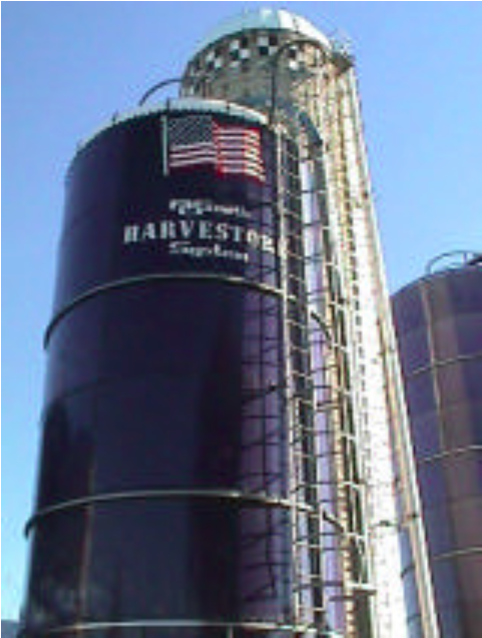Transferring Silage between Silos
by Randy Shaver and Jim Leverich
Introduction
We often receive questions from dairy producers about the practice of transferring silage from the silo where it was originally stored to a more conveniently located silo for feeding. This occurs when silage is bought and sold between operations, moves from farm to farm within an operation, or moves into an upright silo to better utilize a conveyor feeding system. This article will address the most frequently asked questions about this practice.
Can silage be transferred from one storage unit to another?
Controlled research studies have not been conducted to determine the amount of dry matter (DM) or nutritive value loss that is incurred with this practice. We know that silage transfer is done on farms and that reports have been both good and bad.
During the ensiling process, bacteria ferment sugars to lactic acid thereby lowering silage pH. Oxygen present in the silage mass after packing is used up in the fermentation process. The combination of low pH and lack of oxygen stabilizes the silage while it is in the silo. During the transfer of silage to another structure, oxygen is re-introduced into the silage and yeast can become active causing the silage to heat up. Corn silage or small-grain silage, because of their high yeast counts and available sugar, are often prone to heating during a silage transfer. This tendency to heat during a silage transfer is also prevalent in grass or legume silage that did not ferment well. If the silage to be moved was inoculated with lactobacillus buchneri at the initial ensiling, the additional acetic acid production may reduce the amount of heating occurring during transfer.
Because of the introduction of oxygen into the transferred silage, we suspect that there is some loss of both DM and nutritive value. The severity of loss depends on the type and quality of silage transferred, and the transfer process.
 Does time of the year influence the success of silage transfer?
Does time of the year influence the success of silage transfer?
Yes. Silage is less prone to heating during transfer and feed-out in cold weather. Limiting silage transfer and the feeding of transferred silage to the late fall, winter, and early spring months helps reduce the risks associated with transferring silage.
Can additives help prevent silage losses after transfer?
Yes. There are a number of propionic acid based additives that reduce the growth of yeast and molds when added to silage and thereby lessen the risk associated with transferring silage. These products often contain some acetic acid or benzoic acid to make them more effective against yeast. Since these are buffered-acid products, corrosion of equipment is not a concern. These products are usually added at a rate of 4 lbs/per ton of as-fed silage while re-ensiling. They usually cost about $1.00 per lb.
What other management tips should be considered?
Unstable silage that is prone to heating upon exposure to oxygen is not a good candidate for transfer. Testing the silage for pH, yeast counts, and rate and extent of heating upon exposure to oxygen can be done to determine whether it is likely to transfer well.
Make the transfer as quickly as possible to minimize the time that the silage is exposed to oxygen. There should be less oxygen introduced into the silage mass if transferred to a bunker silo or bag than if blown into an upright silo. Pack the re-ensiled material well to exclude as much oxygen from the silage as possible. Transferring to an oxygen-limiting silo should improve the likelihood of a successful transfer, especially for high-moisture corn.
Removing sufficient transferred silage from the silo each day during feed-out to keep the face or surface cool is important. Silage needs to be removed evenly across the whole face or surface of the silo. Typically, removal of 6 inches or more of feed is required to keep the silage face cool between feedings. Any feed that is loosened during feeding and left in the silo is exposed to oxygen and will begin to heat. So, keep the face even and tightly packed and feed up any loose silage.
Focus on Forage – Vol 1: No. 7
© University of Wisconsin Board of Regents, 1999
Jim Leverich, Monroe County Extension Agent
Randy Shaver, Dairy Nutrition Specialist
rdshaver@wisc.edu
UW-Madison, Dairy Science Department
Madison, WI 53706





